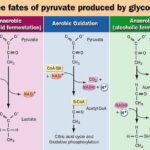AS and A Level Biology 30 Views 1 Answers
Sourav PanLv 9October 29, 2024
Explain that, in eukaryotes, the RNA molecule formed following transcription (primary transcript) is modified by the removal of non-coding sequences (introns) and the joining together of coding sequences (exons) to form mRNA
Explain that, in eukaryotes, the RNA molecule formed following transcription (primary transcript) is modified by the removal of non-coding sequences (introns) and the joining together of coding sequences (exons) to form mRNA
Please login to save the post
Please login to submit an answer.
Sourav PanLv 9May 15, 2025
In eukaryotic cells, the RNA molecule synthesized during transcription, known as the primary transcript or pre-mRNA, undergoes several modifications before it becomes mature messenger RNA (mRNA). Here’s how this process works:
1. Transcription and Primary Transcript Formation
- During transcription, RNA polymerase synthesizes the primary transcript from the DNA template strand. This primary transcript includes both coding sequences (exons) and non-coding sequences (introns).
2. Intron Removal
- Introns are non-coding regions that do not code for proteins. After the primary transcript is synthesized, introns are removed through a process called splicing.
- Splicing Mechanism:
- The spliceosome, a complex of RNA and protein molecules, recognizes specific sequences at the ends of introns.
- It then cuts the RNA at these points, releasing the introns and joining the exons together.
3. Exon Joining
- After introns are removed, the remaining coding sequences, or exons, are joined together to form a continuous coding sequence.
- This process creates a mature mRNA molecule that only contains the information necessary for protein synthesis.
4. Additional Modifications
- In addition to splicing, other modifications may occur to the mRNA:
- 5′ Capping: A modified guanine nucleotide (7-methylguanylate) is added to the 5′ end of the mRNA. This cap protects the mRNA from degradation and helps in the initiation of translation.
- Polyadenylation: A poly-A tail, consisting of a long chain of adenine nucleotides, is added to the 3′ end of the mRNA. This tail also protects the mRNA from degradation and assists in the export of mRNA from the nucleus to the cytoplasm.
5. Formation of Mature mRNA
- The final product, after splicing and modifications, is the mature mRNA. This molecule consists solely of exons, representing the coding sequence of the gene, and is now ready to be translated into a protein by ribosomes in the cytoplasm.
0
0 likes
- Share on Facebook
- Share on Twitter
- Share on LinkedIn
0 found this helpful out of 0 votes
Helpful: 0%
Helpful: 0%
Was this page helpful?




